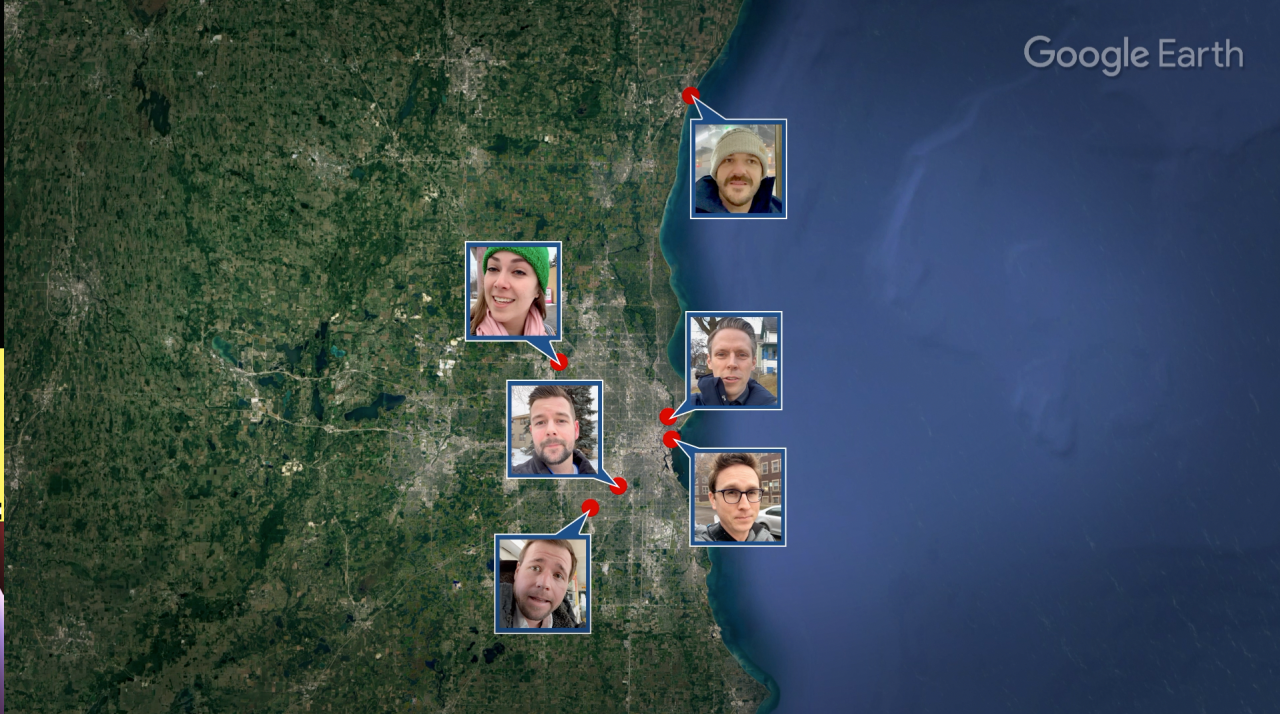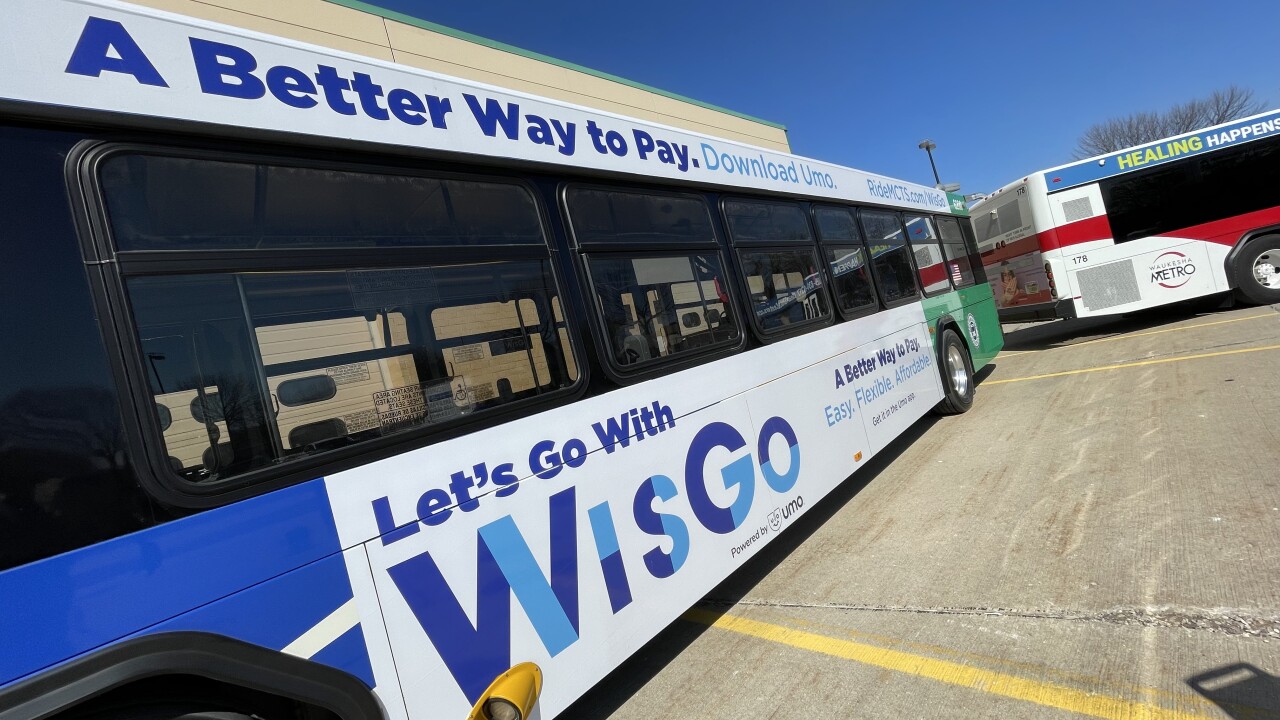MILWAUKEE — “Just be on time.”
For Keenan Pemberton, his expectations for the bus aren’t high. He has to get to work to provide for his family and he depends on the bus to get him there on time.
As his bus arrived on Capitol Avenue, the doors opened and a familiar automated voice chimed in, announcing the direction and final destination for this bus.
“To 127th Street. Red Line. Capitol Drive.”
It’s not the warmest welcome coming from the Siri-adjacent female voice, but it’s one riders like Keenan have grown accustomed to. They ride the bus every single day as their primary mode of transportation.
“I don’t have a vehicle so it’s convenient for me to get to where I need to get to,” Terence Pruitt said.
Convenient and affordable; words riders use to describe riding buses in Milwaukee County in 2023. But, it’s no secret the Milwaukee County Transit System was hit hard by the pandemic, but it’s on the rebound. The system has lost 10 routes and 1,422 bus stops since 2017.
That’s not to say MCTS buses are ghost towns on wheels. Ridership took a dip during the pandemic, but numbers are still in the millions. From 2017-2019, ridership numbers averaged 31.3 million. In the three full years since the pandemic, average ridership was just 15.1 million. MCTS Chief Financial Officer, Tim Hosch says early estimates show 2023’s ridership numbers around 21 million; which would be around 70 percent of pre-pandemic levels.
MCTS announced this information Wednesday when it showcased its new fare collection technology and fare capping initiative. Both are anticipated to have an impact on boosting ridership.
“In systems like New York, London, Sydney, not only has ridership started to return to pre-pandemic levels, but the system, because it’s truly equitable, it makes it so anyone who is visiting Milwaukee or the region or who commutes every day can easily tap on and get where they’re going,” Bonnie Crawford, General Manager of Umo Mobility said.

The Umo app allows riders to scan a QR code to pay for their trip instead of needing physical cash or using an M-Card. Additionally, MCTS is adding fare capping to its services so riders will be able to travel for free on any given day after paying for two trips.
The new fare system officially opens up Saturday, but MCTS has been using it on a beta basis for the last month. Hosch says roughly 60,000 people have already benefited from the fare-capping system in the last month.
By increasing ridership, Professor Robert Schneider at UW-Milwaukee says it can have an impact on reckless driving in Milwaukee.
“I would think so, yeah,” Schneider said. “When you have people shifting away from the bus, that means some of them are going to be taking cars more often which leads to more cars on the road and more overall risk in the transit system for drivers, pedestrians and bicyclists.”
Schneider says public transportation infrastructure additions, like bus bulbs which MCTS is installing as part of its Bus Rapid Transit line, could also create a benefit for lowering reckless driving risk.
“That prevents somebody from driving their car around and passing on the right while also making a platform for someone to wait for the bus conveniently so the bus stops in the lane and picks them up without having to exit," he said.
Ultimately, the new technology is one of many ways MCTS is trying to get more people on the bus. But they recognize the best way to boost ridership is to meet people where they are.
“I think reliable service which people have come to expect and count on in Milwaukee County is first and foremost the thing that gets people back and riding,” Crawford said. “But this is a big evolution in terms of how riders connect to their community.”
The riders the I-Team spoke to echoed those sentiments. Reliability is what people like Carolyn Hendon expect in going about their daily lives.
“Sometimes the bus doesn’t come,” Hendon said about catching her transfer. “When you get off the other bus you have to wait like 15 or 20 minutes for the next bus to come. When it’s cold, it’s a problem. But, when it’s a nice day, it’s not a problem.”
The day Hendon spoke to TMJ4 News, it was a nice day. For the I-Team and other members of TMJ4 News, they didn’t have great weather when trying out MCTS for themselves.
Our team traveled to TMJ4 News back in January from a variety of different places in the area. The South Side to the North Side, Greenfield to Downtown. One TMJ4 employee even made the trip from Port Washington utilizing a coach bus operated by Ozaukee County. Milwaukee County nixed the freeway flyer service late last year.

“You have to get a separate ticket from MCTS if you’re coming into Milwaukee County from Ozaukee County,” news producer Karl Letsche said. “So, it’s $10 round trip, but I think they have a monthly rate for 31 days worth of rides that you can purchase separately.”
Overall, our team experienced some of the same issues regular riders expressed. Some missed transfers because their bus was running behind schedule and, on some of the colder days, the bus being slightly behind schedule was more than just an inconvenience.
“I’m waiting for my bus right now,” Special Projects Producer Katlin Connin said. “But it’s actually not yet. It’s kind of a bummer because it’s really, really cold.”
Overall, the team had a variety of different commutes. Those who were closer and didn’t have any transfers didn’t see much of a difference in commute times.
“That was like a 14-minute bus ride,” Reporter James Groh said. “My normal commute is like 12 minutes so that was pretty good and pretty easy.”
But as the distance grows and multiple buses are added, the variance showed.
“It’s going to take me about an hour to get to work,” Investigative Producer Tyler Eddy said. “I live on the south side of Milwaukee so it usually takes me anywhere about 30 minutes tops driving to the station. So, almost twice as long taking the bus.”
“It took about an hour and ten minutes,” Reporter Bruce Harrison said. “Quicker than I expected. The bus was clipping right along and not a lot of people on and off.”
The Wisconsin Policy Forum issued a report Thursday, detailing uncertainty about MCTS’ financial future. An anticipated budget gap near $26 million makes it unclear what will happen with MCTS’ service.
While 1,422 stops were removed from 2017 to 2022 and 10 bus routes were removed, Hosch says any hopes of getting those back, or adding more for that matter, will require more funding for the transit system.
But hopes of ridership are rebounding. And that’s a step in the right direction, according to MCTS.
“The system is designed for growth,” Hosch said. “Adding more features makes the bus system more attractive and convenient.”
It’s about time to watch on your time. Stream local news and weather 24/7 by searching for “TMJ4” on your device.
Available for download on Roku, Apple TV, Amazon Fire TV, and more.





